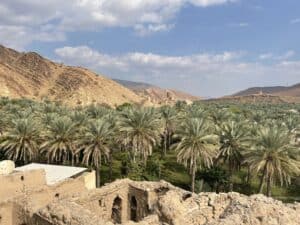

Updated: 04/06/2025
Whether you’re planning a 3-day trip or a 2-week adventure, this guide is designed to help.
I’ve categorized each location by what it’s ‘best for’- like hiking, history, or cultural discovery – so you can easily build your perfect Oman itinerary. Don’t miss the interactive map to see how all these spots connect!
Planning a trip to Oman in 2025 and wondering where to find the most beautiful places in Oman?
I’ve lived in Oman for over four years and spent a lot of time travelling across the country – exploring on weekends and holidays, and following the advice of local friends. This list includes 15 beautiful places in Oman that I’ve personally visited – and in most cases, returned to more than once.
You’ll find a mix of landscapes and experiences: old forts, mountain villages, wadis, and beaches. Each one offers something different, whether you’re into hiking, history, or just want to take in the views. Soon, you’ll understand why this (often underestimated) country is definitely worth a visit!
If you’re looking for must-see destinations in Oman and putting together your itinerary, this guide will help you plan a meaningful trip – not just a pretty one.
Wadi Shab: Hike and swim through emerald pools and hidden caves.
Sultan Qaboos Grand Mosque: Oman’s most iconic mosque, known for its scale and elegant design.
Nizwa Fort: Climb the tower for sweeping views and discover the fort’s rich history.
Muttrah Souq: One of the oldest markets in the Arab world, full of silver, spices, and souvenirs.
Bahla Fort: A UNESCO site with an eerie charm and legends of jinn.
Jebel Akhdar: Terraced farms, pomegranate trees, and spring rose gardens high in the mountains.
Ras Al Jinz: Watch sea turtles nest on the beach at night with a guided tour.
Musandam Peninsula: Cruise through rocky fjords and spot dolphins in calm turquoise waters.
Misfat Al Abriyeen: A traditional mud-brick village surrounded by palm groves and mountain paths.
Birkat Al Mouz: Explore ruins and a working UNESCO falaj system at the foot of the mountains.
Jebel Shams: Hike the Balcony Walk along Oman’s “Grand Canyon.”
Wahiba Sands: Ride camels, drive over dunes, and sleep under the stars in a desert camp.
Mughsail Beach: A white-sand beach with natural blowholes near Salalah.
The Daymaniyat islands: snorkel in crystal clear waters near Muscat
Al Khaluf: Sugar Dunes and Empty Beaches
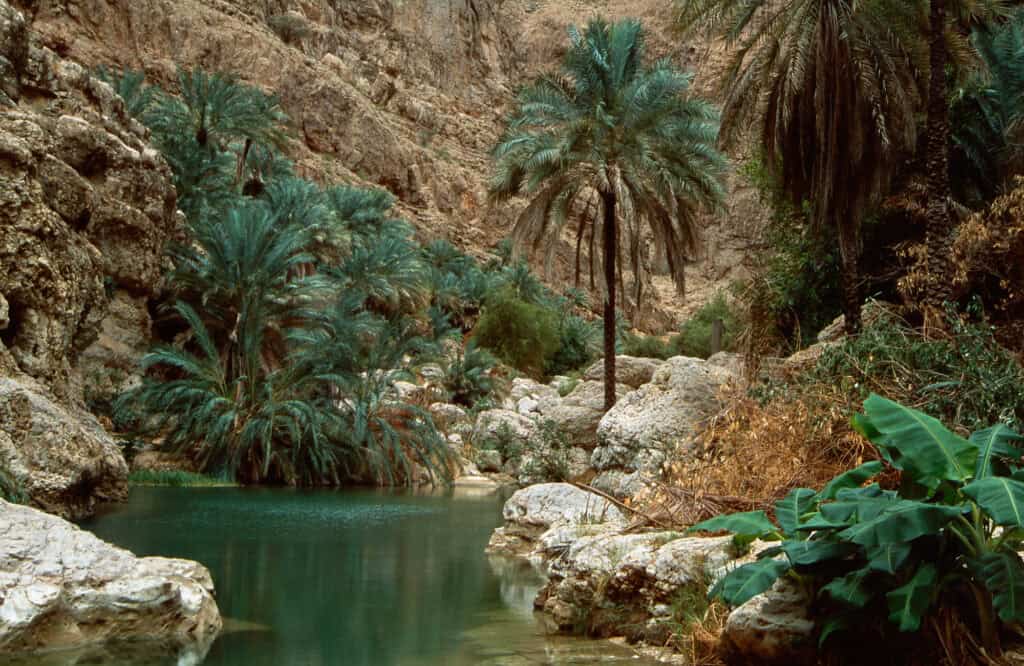

Location: Near Tiwi, about a two-hour drive from Muscat
Getting There: Best reached by self-drive; guided tours are also available
Time Needed: Four to five hours, including hiking and swimming
Cost: Free, but a short boat ride (1 OMR) is required to start the hike
Tips:
Location: Muscat
Getting There: Taxi or rental car; free parking available
Opening Hours: 8:30 AM – 11:00 AM, Sunday to Thursday
Cost: Free entry
Dress Code:
This is one of the top places to see in Oman even if you only have a short time in Muscat.

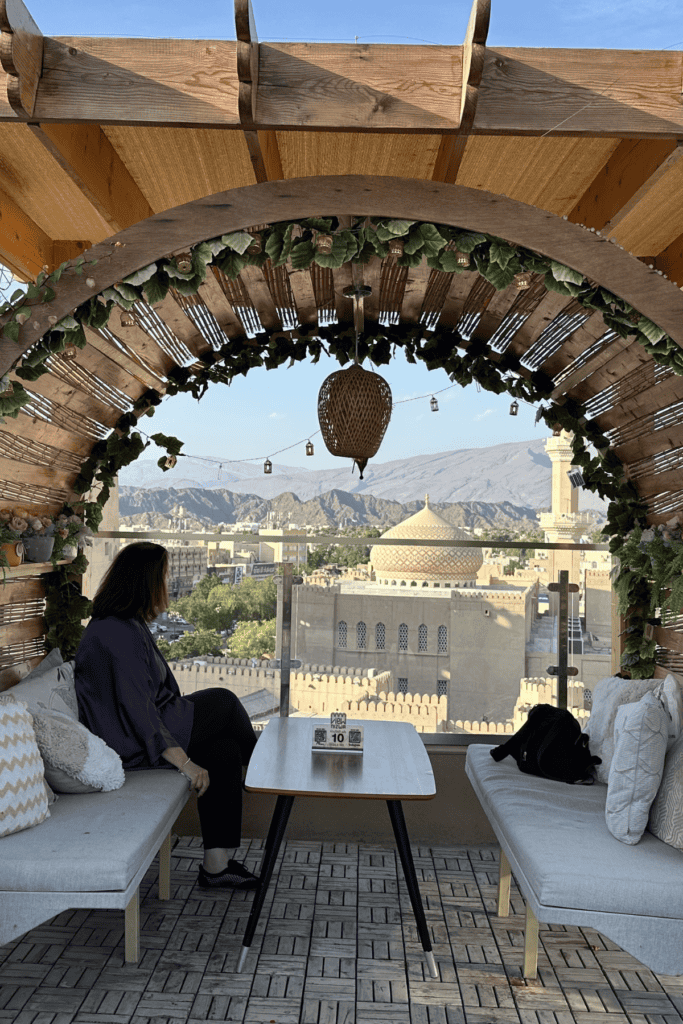
Location: Nizwa, about 1.5 hours from Muscat
Getting There: Self-drive or guided tour
Opening Hours: 8:00 AM – 8:00 PM, Saturday to Thursday; 8:00 AM – 11:30 AM on Friday
Cost: 5 OMR for adults, 3 OMR for students, free for children under six
Tips:
To be honest with you, I’m not sure if this is one of the most beautiful places in Oman. But I’ve included it because I believe you should definitely visit it. If anything, you can try to uncover the real heritage and history that remain hidden beneath the ‘touristy’ top layer that now covers a lot of the market.
Here, you will enter one of the oldest marketplaces in the Arab world. It is located along Muscat’s splendid Corniche.
Its maze of alleyways always feels chaotic as local people, tourists and merchants mingle. The smell of luban adds to the whole experience as it offers a fascinating mix of stalls selling silverware, textiles, perfumes, and souvenirs. You will no doubt find a wide range of gifts and souvenirs to take home.
To delve deeper, read my ‘Step by step Guide to Mutrah Souq’ by clicking here.
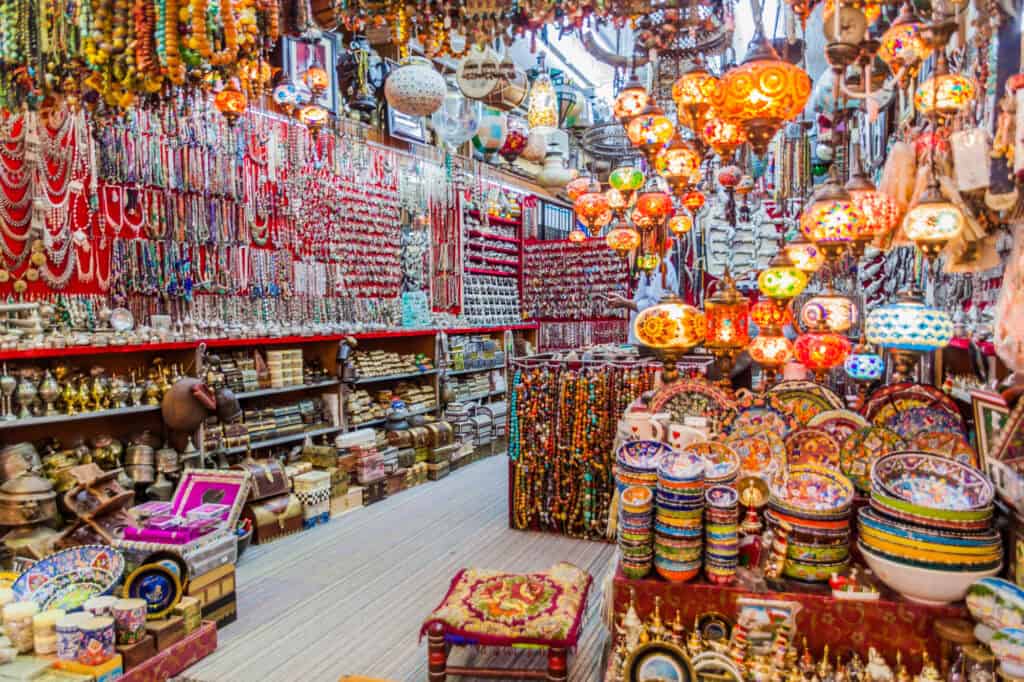
Location: Muttrah Corniche, Muscat
Getting There: Taxi or public bus from central Muscat
Opening Hours: 9:00 AM – 1:00 PM and 4:00 PM – 10:00 PM (some shops close in the afternoon)
Cost: Free entry
Shopping Tips:
Bahla stands out in Omani culture as a ‘magical place’ – both in terms of aesthetics and ‘magic.’ Surrounded by a palm oasis, it’s one of the most unique historical attractions in Oman, with legends of jinn adding to its mystique.
When working as a teacher in Nizwa, my students told me very quickly about a ‘Bahla speciality.’ In Bahla, people can draw a line on the ground, cross the line, and fly to anywhere in the world! They also told me that, according to ‘hear-say’, when they started building the fort, the workers would find their work had all been brought down during the night. Mysterious powers were at work. And this meant they had to build parts of the walls over and over again…
A UNESCO World Heritage Site, Bahla Fort is one of the most significant historical sites in Oman. Visitors can explore its courtyards, staircases, and hidden rooms, gaining insight into the fort’s role in Oman’s defensive history.
If you’re interested in hidden gems in Oman, this is one of them. It’s quiet, atmospheric, and full of stories – especially if you take the time to talk to a local guide or wander on your own.

Location: Bahla, near Nizwa (40-minute drive)
Getting There: Best reached by self-drive or guided tour
Opening Hours: 9:00 AM – 4:00 PM, Saturday to Thursday; 8:00 AM – 11:00 AM on Friday
Cost: 3 OMR for adults, free for children under six
Must-See:
Unlike the dry landscapes that define much of Oman, Jebel Akhdar – meaning “Green Mountain”- is a lush, high-altitude region in the Al Hajar Mountains.
It’s one of the natural wonders of Oman, with terraced farms, pomegranate orchards, and rose gardens spread across the slopes. The area is ideal for hiking and cultural exploration. The mountain’s cooler climate (actually cold in winter!) makes it a perfect retreat from the heat. I recommend you visit during the annual rose harvest in spring. During this time, locals extract fragrant rose water using traditional distillation methods.
If you’re interested in knowing more about the local production methods of rose water, see my blogpost on ‘9 ancient Arabic Beauty Rituals.’
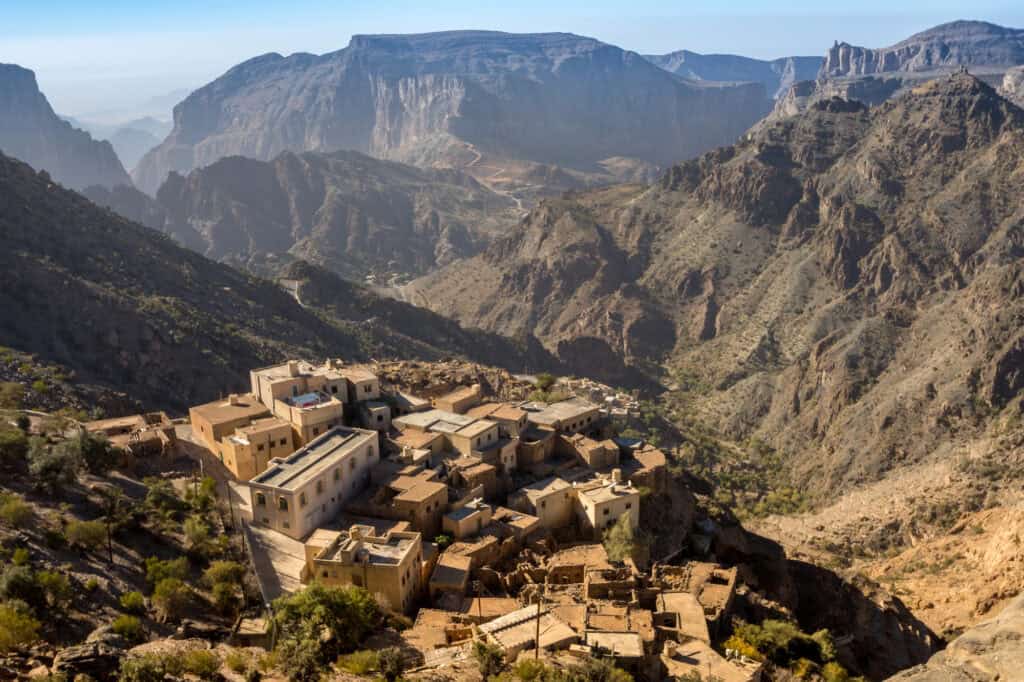
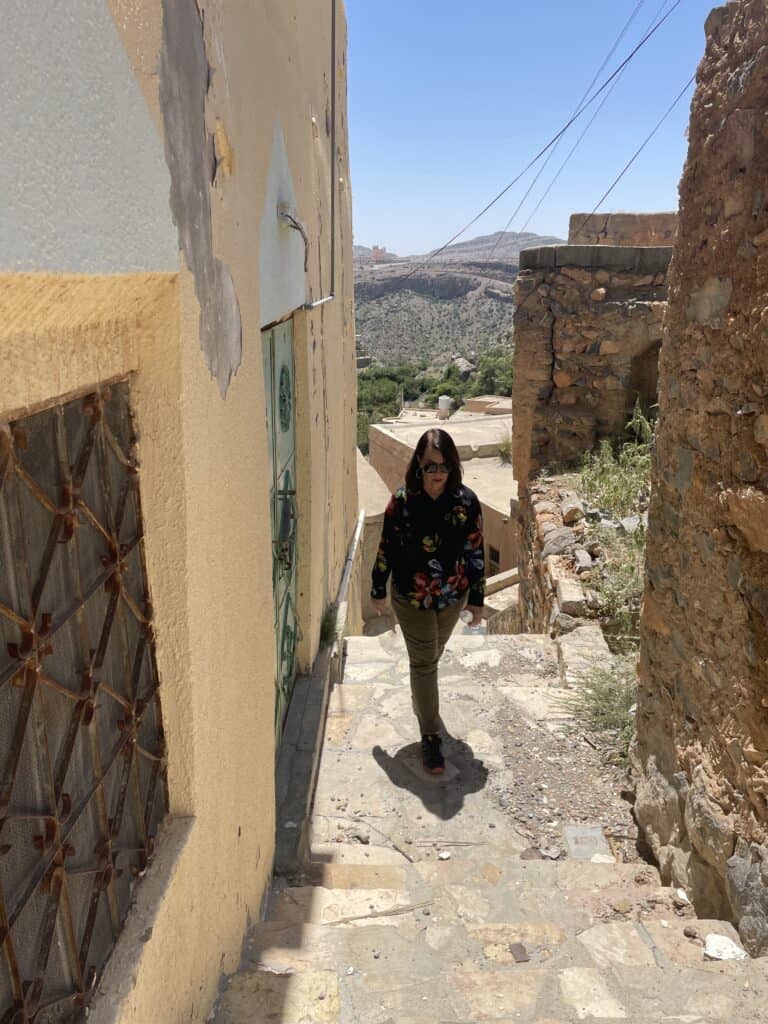
Location: Al Hajar Mountains, about two hours from Muscat
Getting There: A 4WD is required; a checkpoint enforces this rule
Time Needed: A full day or an overnight stay
Best Time to Visit: March to May for the rose harvest, or October to April for pleasant weather
Things to Do:
Visiting Ras Al Jinz Turtle Reserve under the moonlight is a unique experience. If you’re creating a 2025 Oman travel itinerary that includes wildlife, this should be on your list.
The best time to visit is between June and September, when visitors can witness turtles nesting. Guided night tours offer a chance to observe this remarkable natural phenomenon without disturbing the turtles.
The reserve also has a visitor centre with exhibits on marine conservation, making it an educational as well as a fascinating experience.
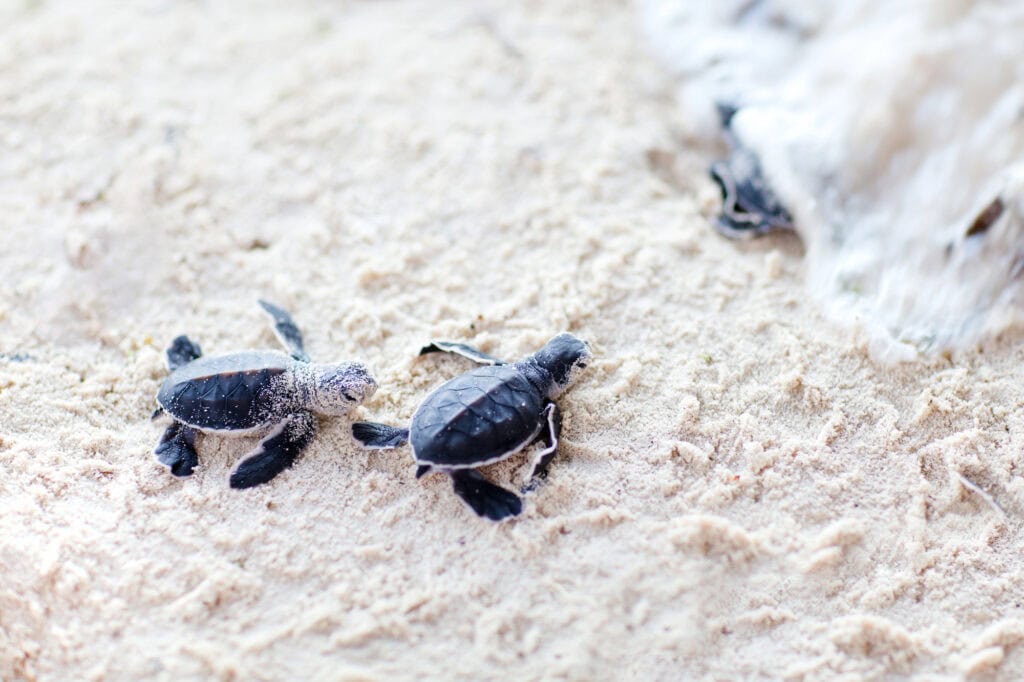
Location: Near Sur, about a three-hour drive from Muscat
Getting There: Self-drive or guided tour
Best Visiting Time: June to September during the turtle nesting season
Cost: 8 OMR for adults, 3 OMR for children for night tours.
Tour Information:
This is one of the most unique places to visit in Oman, especially if you’re travelling with children or enjoy quiet, nature-based trips.
Nicknamed the “Norway of Arabia,” the Musandam Peninsula offers some of the most dramatic landscapes in the country. With its fjord-like inlets and calm turquoise waters, it’s one of the best hidden gems in Oman—remote, scenic, and still largely untouched.
A dhow cruise through the Musandam fjords is one of the best ways to take in the spectacular scenery, often accompanied by dolphins swimming alongside the boats. The area is also a top destination for snorkeling and scuba diving, with rich marine life and coral reefs.
Due to its isolated location, Musandam remains one of Oman’s most untouched and tranquil natural wonders. This may change in the future but for the moment it is still an amazingly calm and serene place.
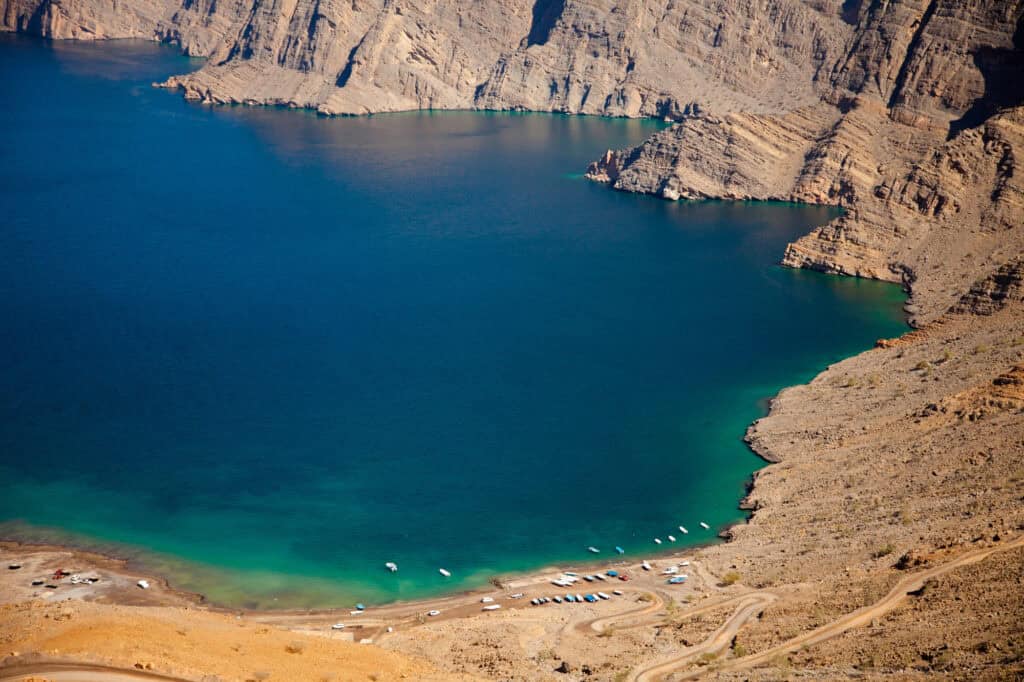
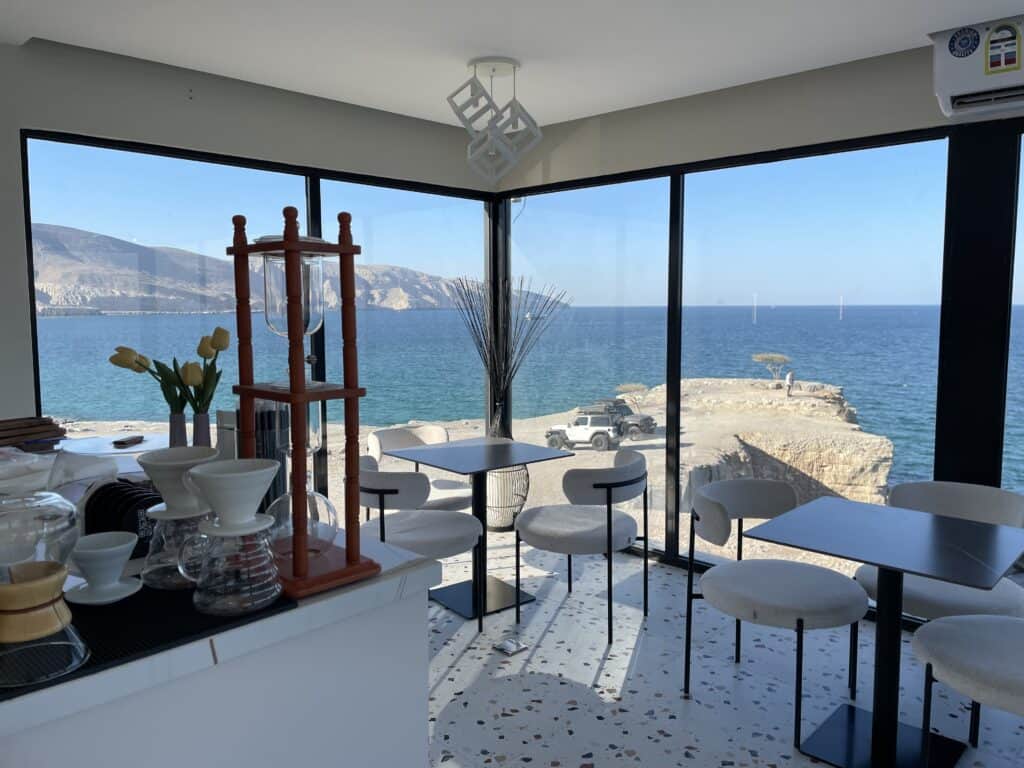
Location: Northern Oman, bordering the UAE
Getting There: Fly to Khasab from Muscat or drive from the UAE
Time Needed: A full day or an overnight stay
Must-Do Activity: A dhow cruise here is one of the top things to do in Oman, especially if you’re after peace, nature, and a bit of dolphin spotting.
Border Information: If driving from the UAE, check visa requirements for re-entry.
Misfat is one of my favourite places in Oman. It’s not just beautiful – it also feels real, lived-in, and local. If you’re looking for authentic Omani experiences, this mountain village is a great place to start. Known for its traditional mud-brick houses, narrow alleyways, and lush terraced gardens, this mountain village thrives thanks to the ancient falaj irrigation system.
As you walk through the village, you can admire the date palms, banana trees, and plant life that contrast with the surrounding brown mountains.
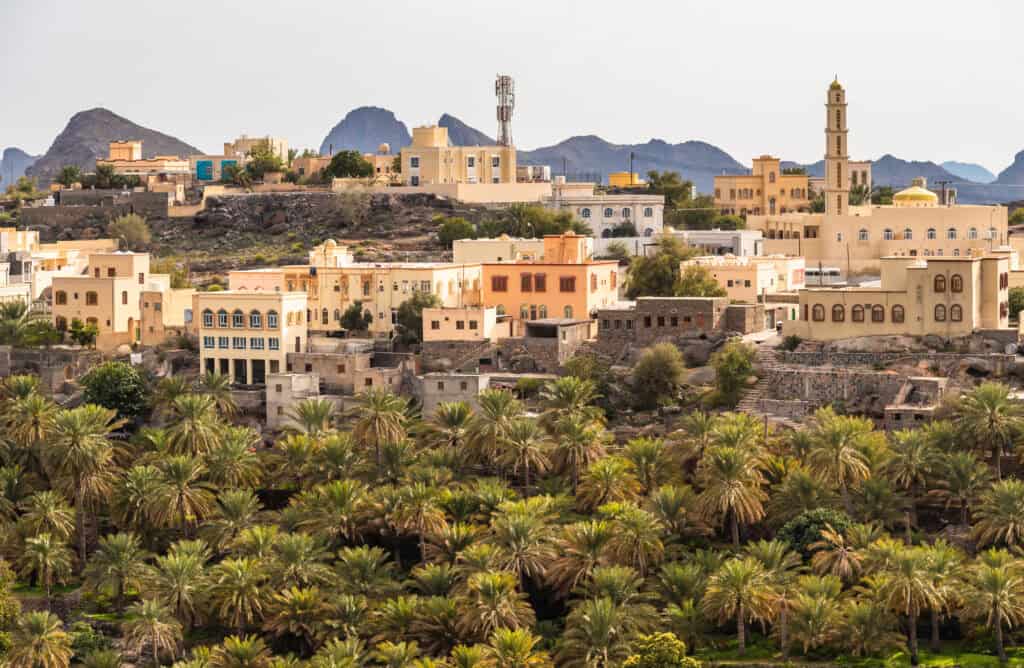
Location: Al Hajar Mountains, near Al Hamra
Getting There: Self-drive; a 4WD is not required
Time Needed: Two to three hours or an overnight stay in a guesthouse
Things to Do:
Birkat Al Mouz tells a story of Oman’s past. The name translates to “Pool of Bananas,” reflecting the region’s once-thriving plantations.
With its mud-brick ruins and UNESCO-listed falaj, it’s ideal if you’re exploring Oman’s cultural heritage or want to photograph off-the-beaten-path places.The village is also home to one of Oman’s UNESCO-listed falaj irrigation systems, Falaj Al Khatmeen, which continues to bring water to nearby farms.
The surrounding date palm groves and the stunning backdrop of Jebel Akhdar make this a magical place for photography and quiet exploration.
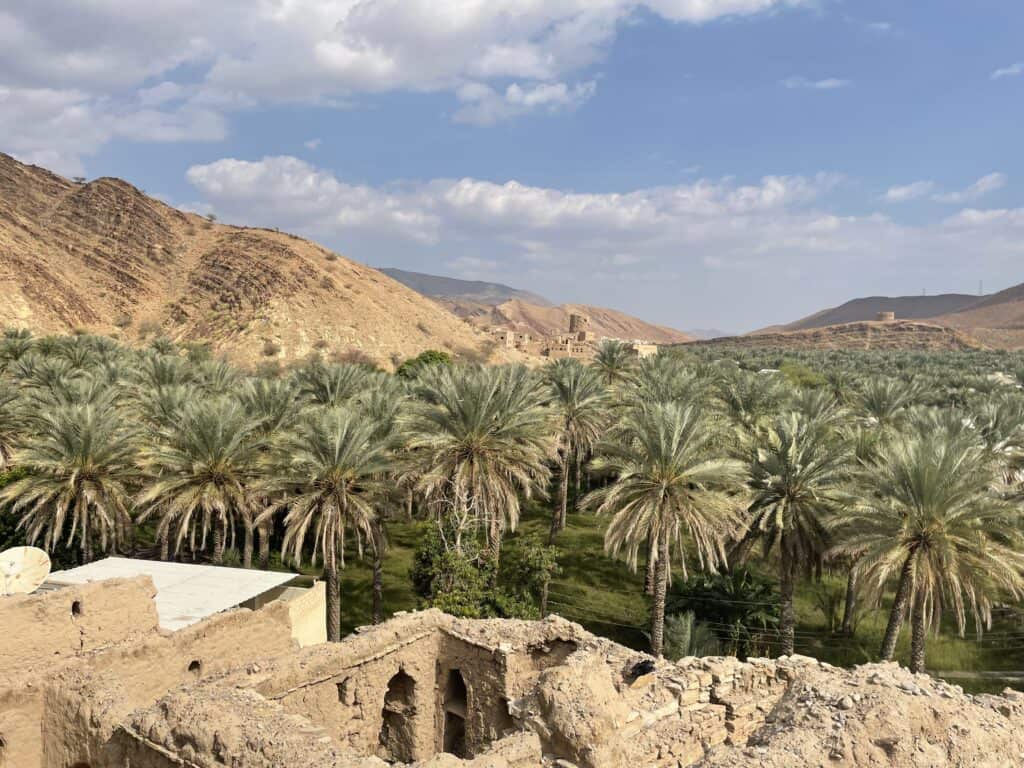
Location: Near Nizwa, at the base of Jebel Akhdar
Getting There: Self-drive or guided tour
Time Needed: One to two hours
Must-See:
This is the highest mountain in Oman, and home to one of the most popular hikes: the Balcony Walk. It’s a must if you’re into outdoor adventures in Oman. It is famous for its dramatic landscapes and breathtaking views of Wadi Ghul, often called the “Grand Canyon of Arabia.”
Jebel Shams is a paradise for hikers and climbers, with the Balcony Walk offering an unforgettable trek along the canyon’s edge. Traditional villages, such as Al Khitaym, provide a glimpse into rural Omani life.

Location: Al Hajar Mountains, near Nizwa
Getting There: A 4WD is recommended but not required
Time Needed: A full day or an overnight stay
Cost: Free entry
Best Hike: The Balcony Walk, a three- to four-hour hike offering breathtaking canyon views.
This desert stretches out like an ocean of golden dunes. The Wahiba Sands (also known as the Sharqiya Sands) is one of Oman’s most iconic desert landscapes.
Home to Bedouins, this region offers a chance to experience traditional desert life, from camel trekking to dune bashing in 4WD vehicles. At night, the combination of stargazing and listening to stories around a campfire is a magical experience. It’s one of the top places to see in Oman for travellers looking for something immersive and adventurous.


Location: Sharqiya Sands, about a three-hour drive from Muscat
Getting There: A 4WD is required, or visitors can join a guided tour
Best Time to Visit: October to April when temperatures are cooler
Desert Activities:
Near Salalah, this wide stretch of white sand is one of the most beautiful beaches I’ve seen in Oman. The turquoise waters of the sea and the surrounding cliffs make it outstanding.
One of the main attractions here is the Al Marneef blowholes, where seawater shoots into the air through natural rock openings, creating a spectacular display.
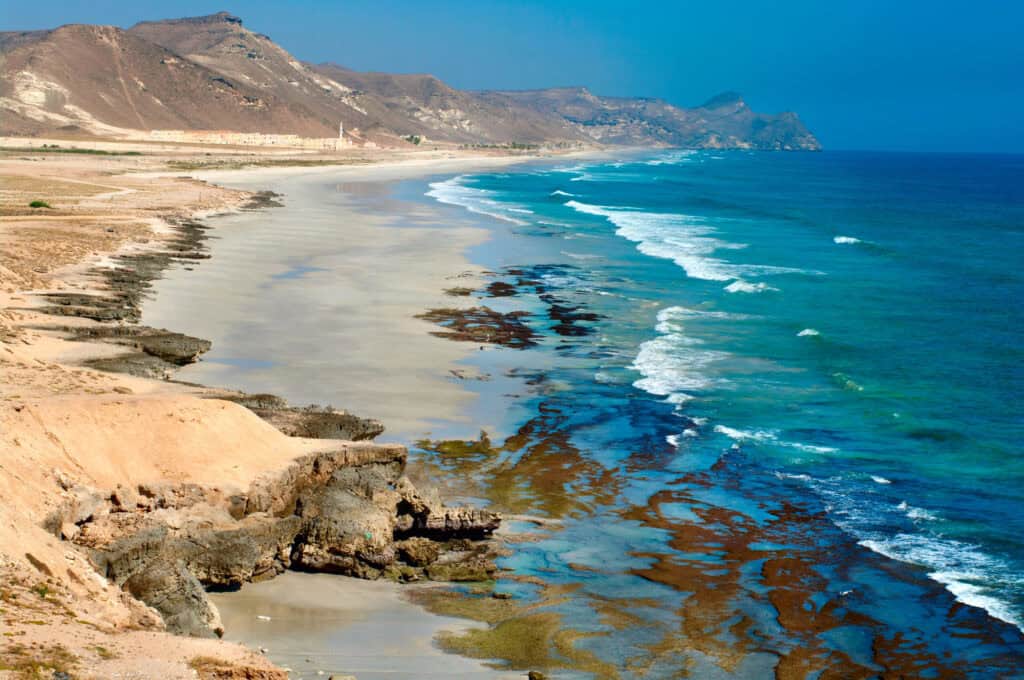
Location: Near Salalah in the Dhofar region
Getting There: A 30-minute drive from Salalah
Best Time to Visit: June to September during the Khareef monsoon season
Must-See:
It is unbelievable how close these islands are to Muscat — and how untouched they feel. Just 40 minutes by boat from the coast, this protected group of islets is home to some of the clearest waters in Oman. Think white-sand coves, coral reefs, and sea turtles gliding past your fins.
Most people visit on a day trip by boat, which usually includes snorkelling at two or three different sites. The visibility is incredible.
There are no shops or cafes here — just sea, sky, and snorkelling.
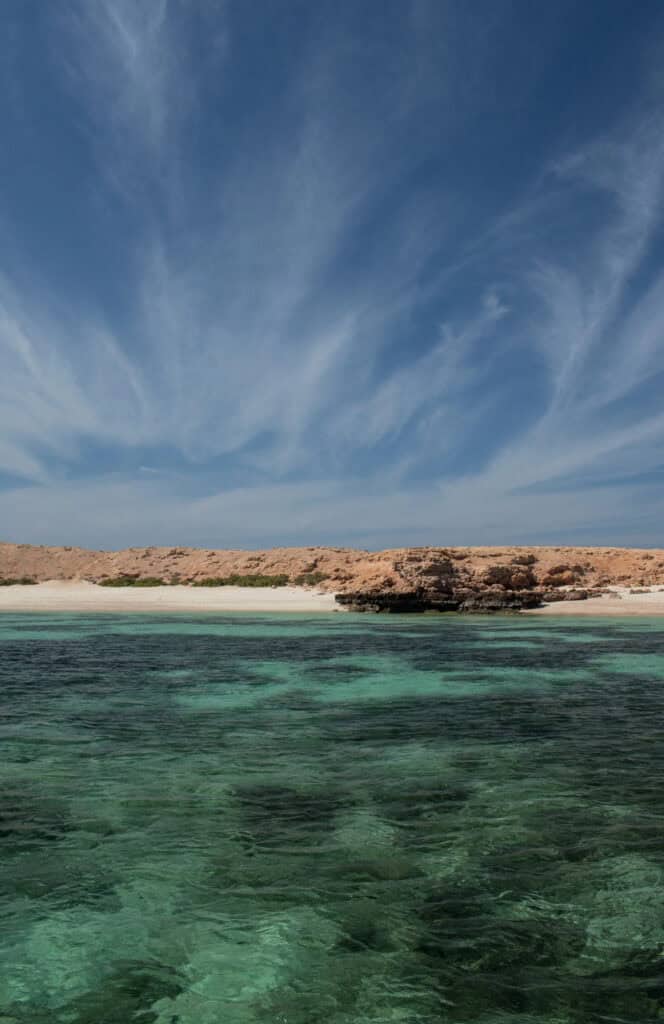
Location: Off the coast between Seeb and Barka (nearest departure is from Al Mouj or Marina Bandar).
Getting There: Accessible only by boat; book a tour in Muscat, Seeb, or Barka.
Time Needed: Half-day or full-day trip (most tours are 4–6 hours
Cost: Around 25–40 OMR per person depending on the operator
Best Time to Visit: Between late September and early May
Must-See: Dolphin Sightings (seasonal): During the boat ride, keep an eye out for spinner and bottlenose dolphins.
Tucked away on Oman’s central coast, Al Khaluf is a place that feels almost otherworldly. What makes it special are the bright white sand dunes that roll right into the sea — often called the “Sugar Dunes” because of their ultra-fine, pale sand. Paired with the vivid turquoise of the water, it’s one of the most surreal and photogenic coastal landscapes in Oman.
Despite its beauty, Al Khaluf remains off most tourists’ radar. The area is remote and feels wild — you might have the entire beach to yourself, especially if you camp overnight.
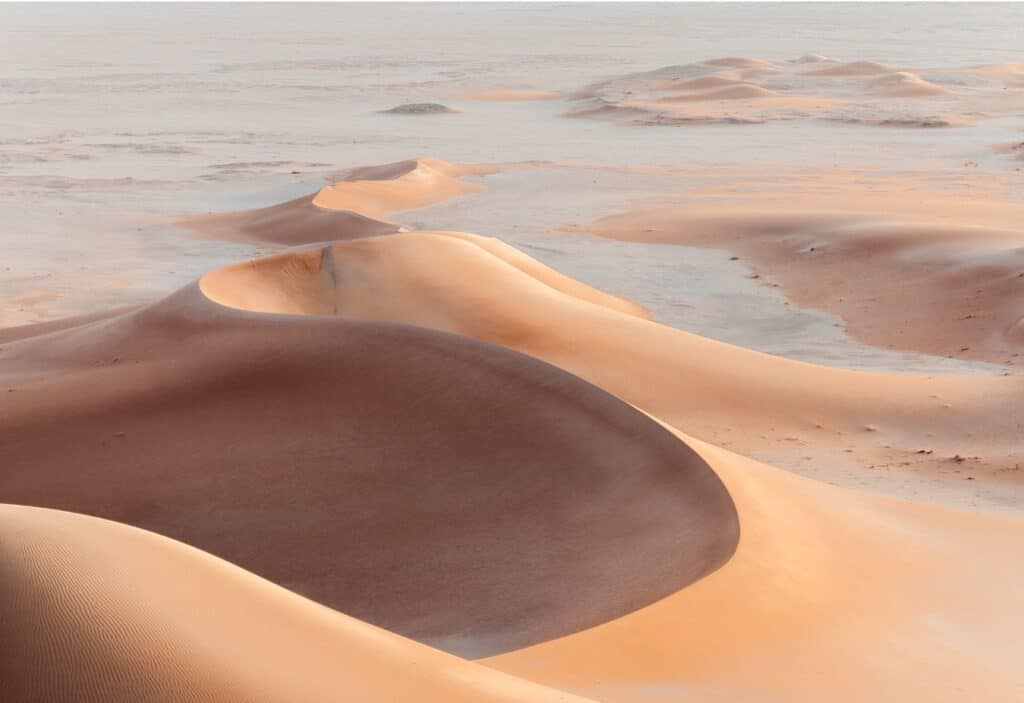
This blogpost was all about the 15 places that I consider to be exceptionally beautiful. Have you visited any of these stunning locations, or do you have a favorite spot in Oman? Share your experiences in the comments—I’d love to hear about your journey!
I think it’s impossible to choose just one place that is THE most beautiful in the country. In my opinion, some of the most beautiful places in Oman include Wadi Shab, Jebel Shams, the Daymaniyat Islands, and Jebel Akhdar. These spots offer a mix of natural beauty, cultural heritage, and unforgettable views.
In terms of vibe, creativity, lifestyle, and places to hang out, the coolest city in Oman is undoubtedly Muscat. It definitely has a Café Culture and trendy spots around Al Mouj and Qurum.
Muscat is the most visited city. Followed by Salalah and Nizwa.
Many of Oman’s top scenic locations can be reached by self-driving. Some places, like Jebel Akhdar or Wahiba Sands, require a 4WD. Guided tours are also available for most destinations.

Hi, I’m Christine, the founder of Joussour to Oman. After living in Oman for over four years, I created this blog to share the practical guides and honest tips I wish I'd had. I've spent years travelling the country - from sleeping under the stars in desert camps to navigating the remote mountain villages of the Hajar range.
Everything you read here is based on my firsthand experience, often visiting places multiple times to ensure my advice is accurate and genuinely helpful. My goal is to help you experience the real Oman, beyond the tourist trails.